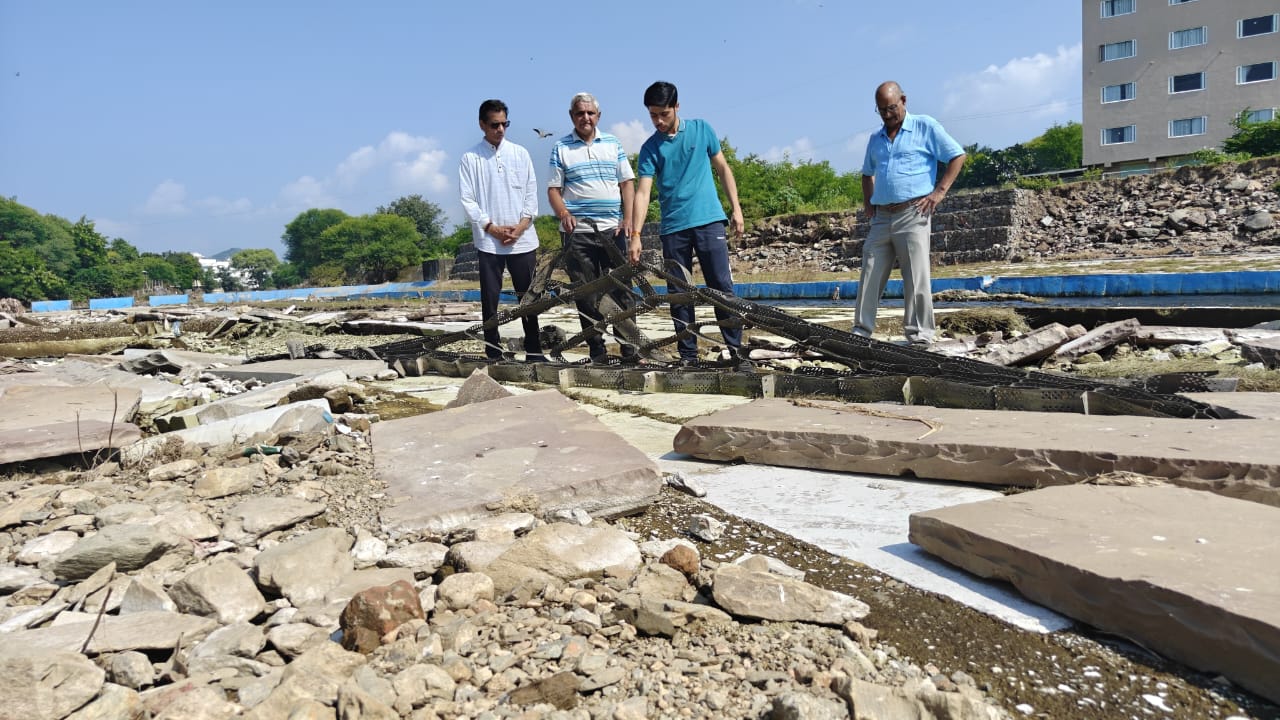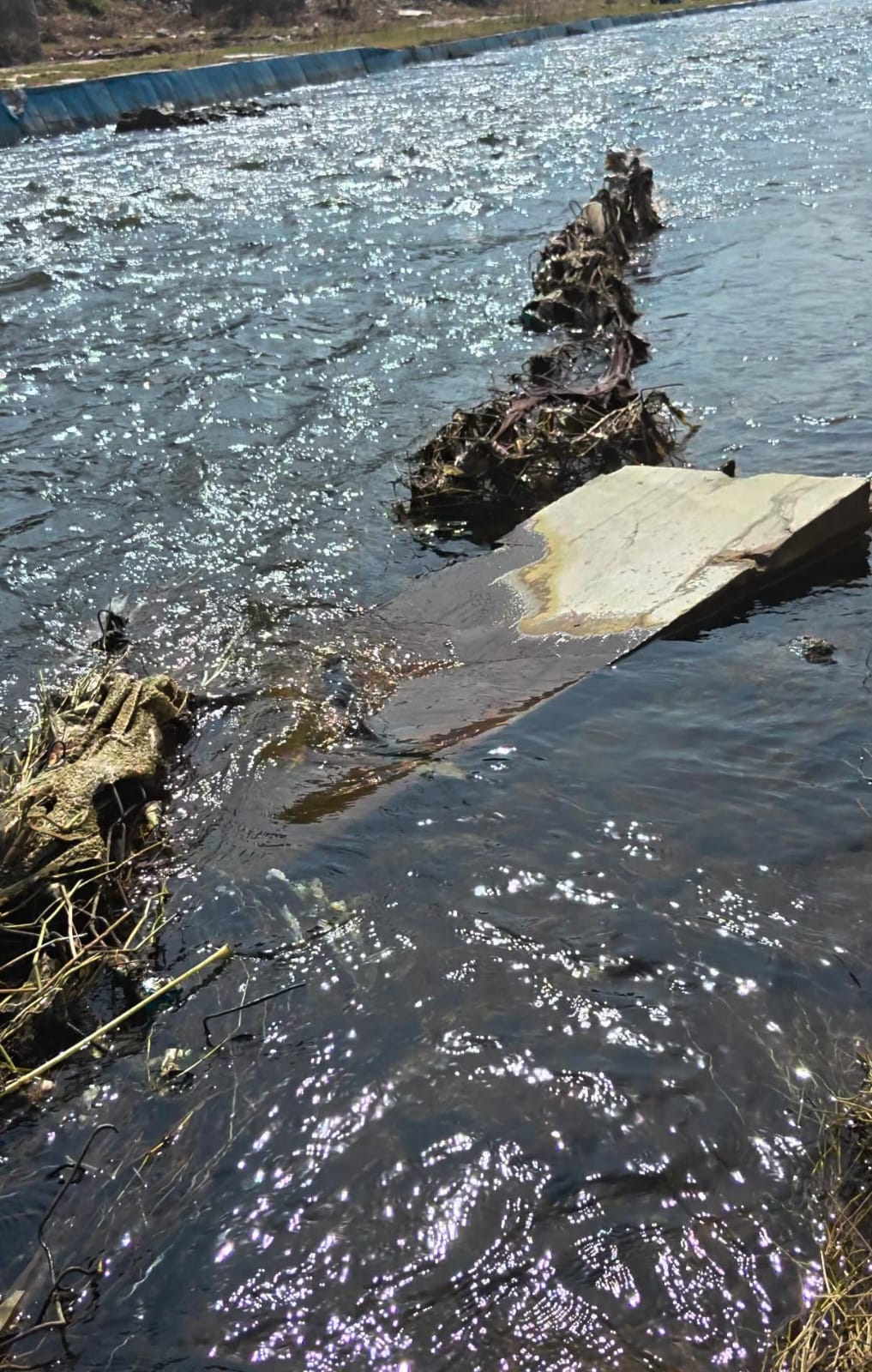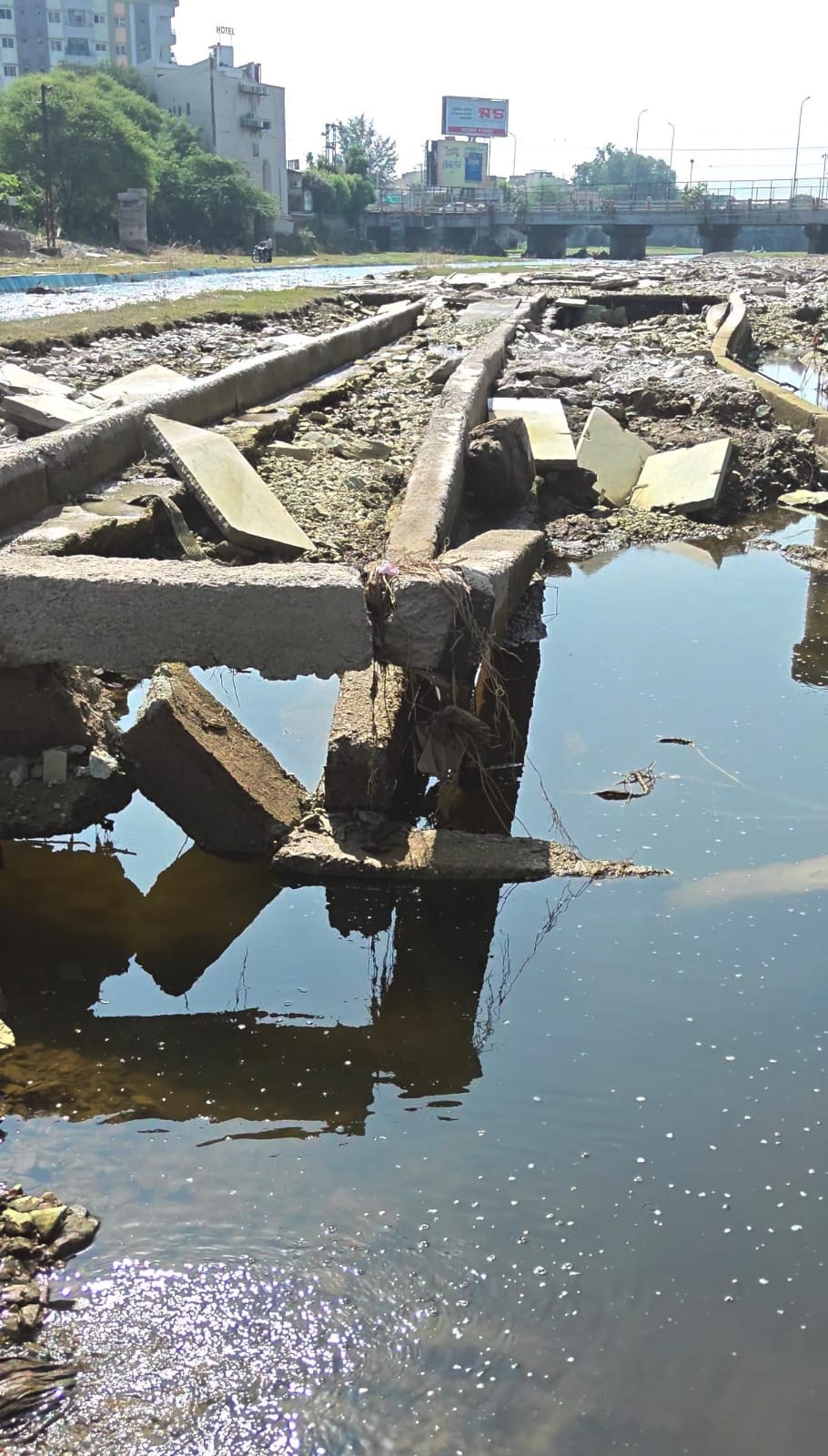#### When the River Speaks: Lessons from Ayad’s Wrath

A single day of flood in the Ayad River has delivered a lesson far louder than any public debate or expert opinion could have. On September 6, the river swept away slabs, walls, and gardens erected under the Smart City project—works that had been paraded as symbols of "beautification" and progress. What the water left behind was not merely debris, but a powerful reminder: nature cannot be forced into submission.

The Folly of Concrete Over Rivers
Environmentalists have long warned that pouring concrete into a river’s bed and narrowing its natural course is an invitation to disaster. Yet, the call of reason was ignored. RCC walls were built, heavy stone slabs were cemented with chemicals, and ornamental gardens were laid across the flow. The project consumed crores of rupees of public money—taxpayers’ money. And what happened? In just one day, the river dismantled it all, undoing months of construction in a matter of hours.

A Repeat of Predictable Failure
This is not the first warning. Last year, when slabs had already begun shifting, officials tried to secure them with iron clips, hoping to outsmart the current. The result is before us—clips broken, slabs uprooted, soil eroded, and gardens destroyed. One more round of wasted money, one more round of misplaced confidence.
The True Cost of Vanity Projects
Beautification projects look impressive on paper and even more glamorous in glossy presentations, but when they disregard ecological wisdom, they become nothing more than vanity projects. What was marketed as progress has turned into an open-air exhibit of negligence. Every broken slab and every washed-away garden is a symbol of how public funds were squandered, while genuine river restoration remained neglected.
Stop the Whitewashing
And yet, astonishingly, the Smart City machinery has rushed once more to "repair" the damage, as though patchwork could fool the river. This is not repair; this is denial. To repeat the same mistake while expecting a different outcome is the very definition of folly.
A Call for Humility
The Ayad River has spoken, and her message is clear: let the river be. Environmentalists are right in demanding that rubble, slabs, and artificial gardens be removed, and the river restored to her natural form. What is required now is not construction, but collective repentance—a sincere acknowledgment that we erred by trying to "beautify" what was already beautiful in its natural state.
Let Rivers Flow, Let Wisdom Prevail
If there is a real lesson from this episode, it is this: rivers cannot be tamed by concrete, nor can they be beautified by ornamental projects. They demand respect, space, and humility. Any development that disregards this truth is not progress—it is a waste, both of money and of trust.
साभार :
© CopyRight Pressnote.in | A Avid Web Solutions Venture.






